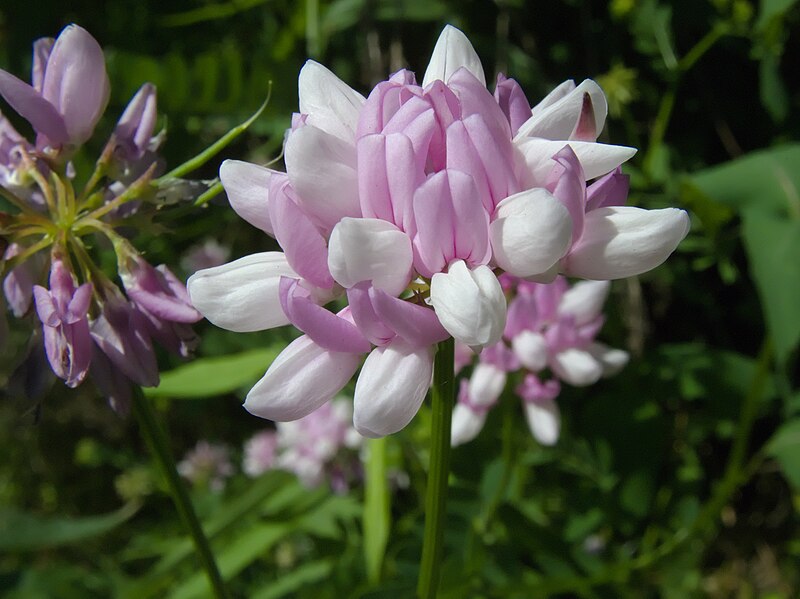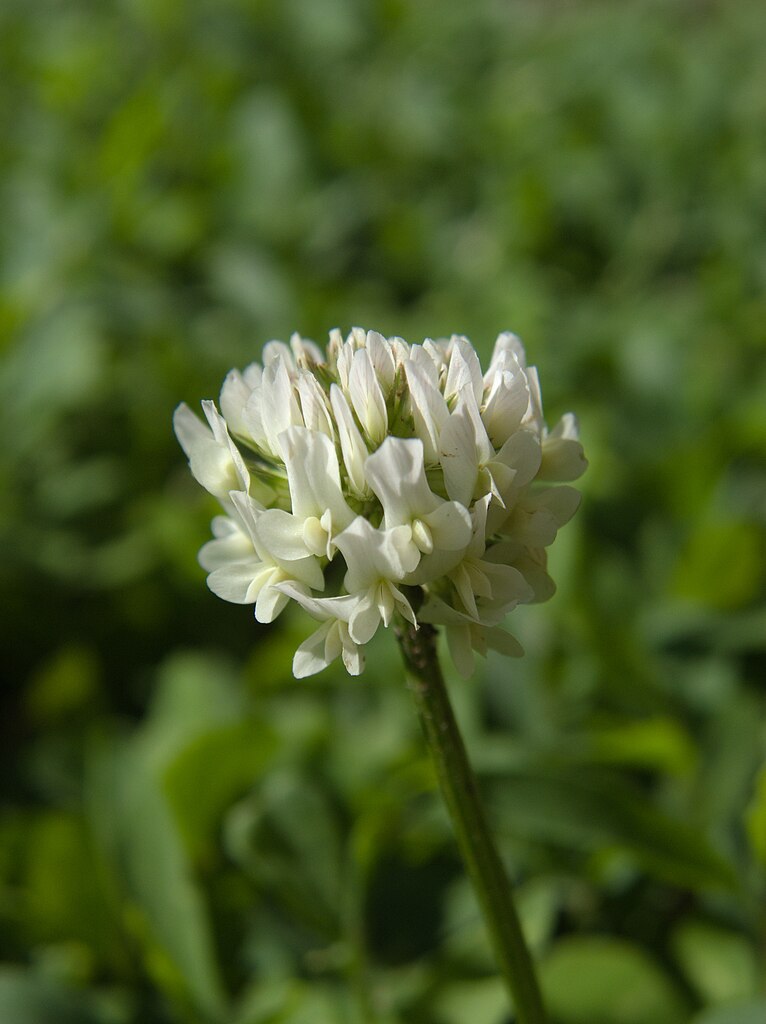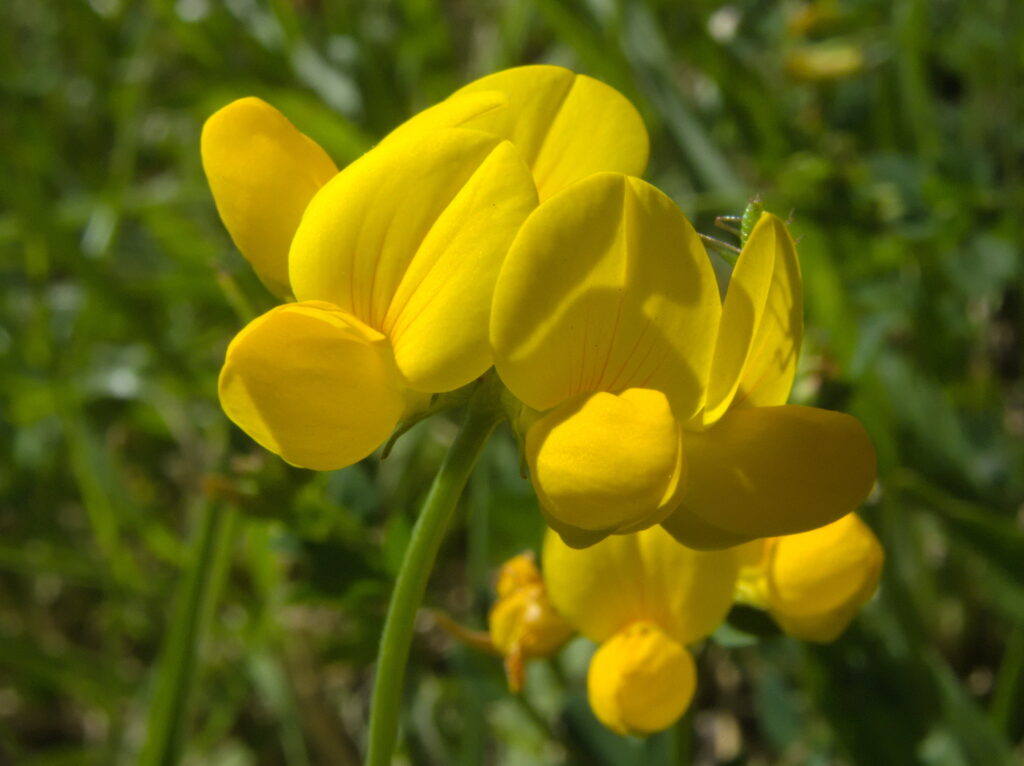
Cheery little rings of bright yellow pea flowers with vertical red stripes decorate roadsides, parking lots, and anywhere else they can gain a foothold. These were blooming by a parking lot in Robinson Township.
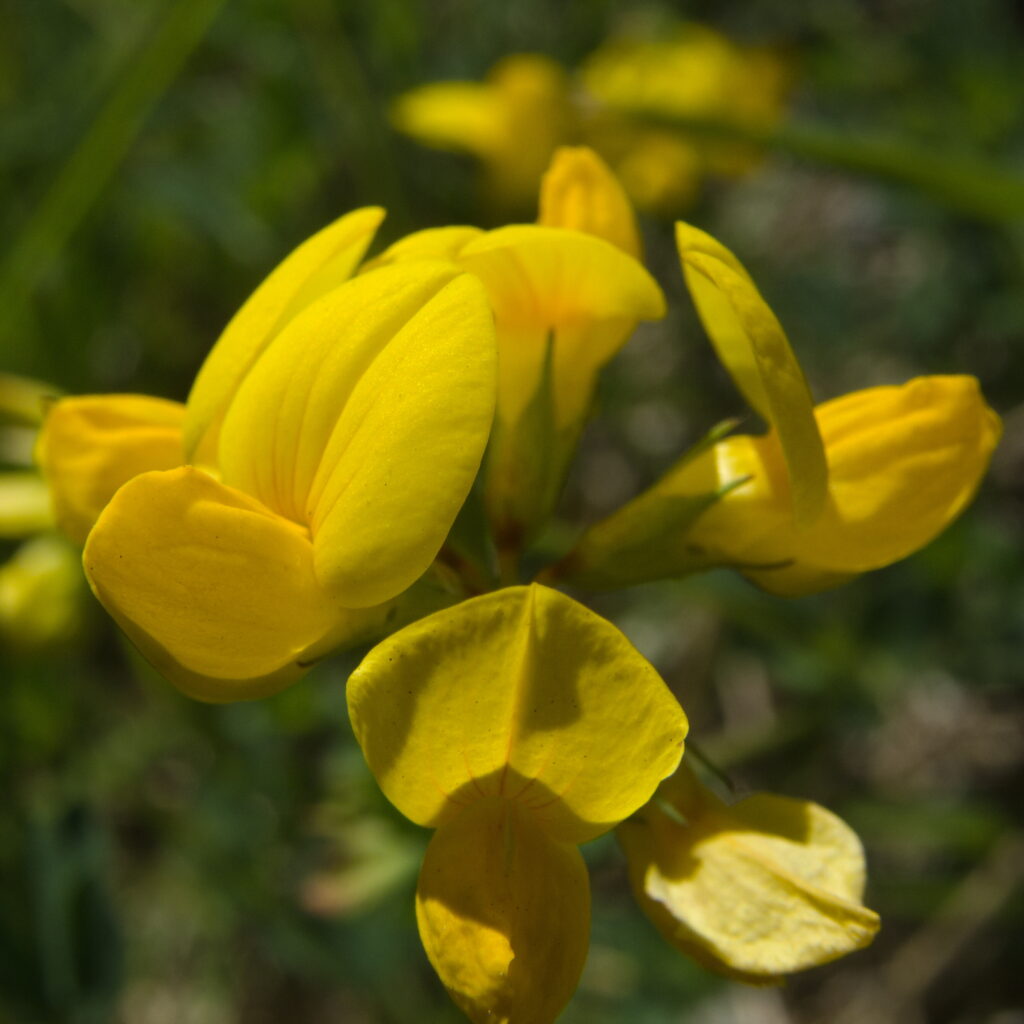
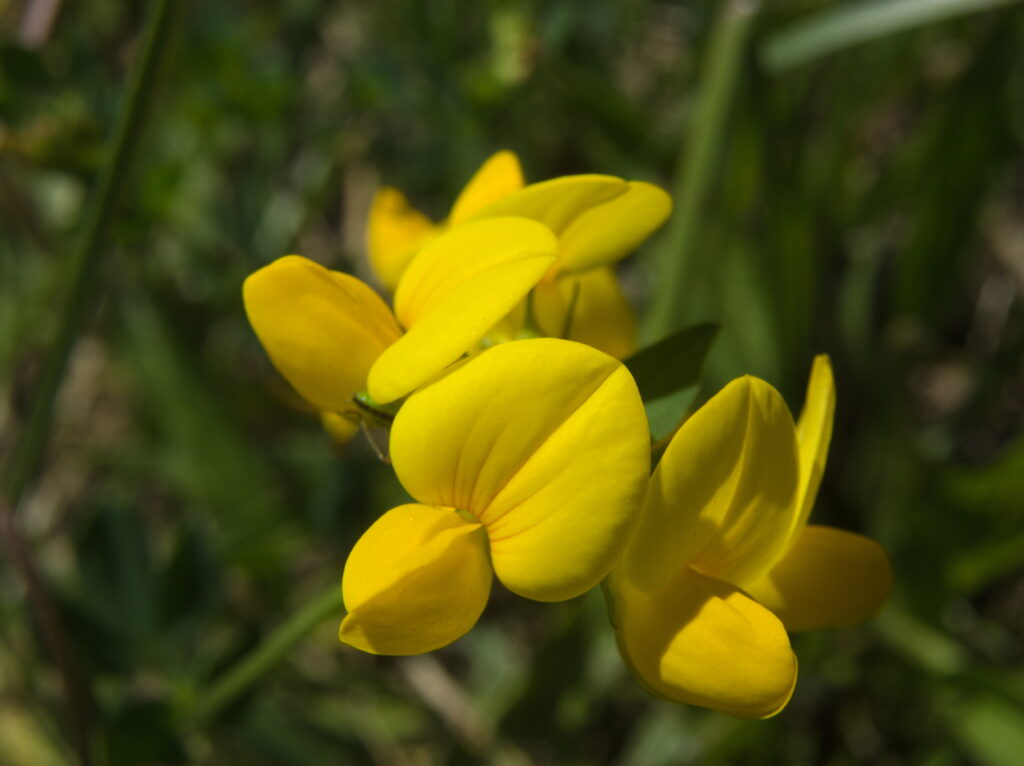
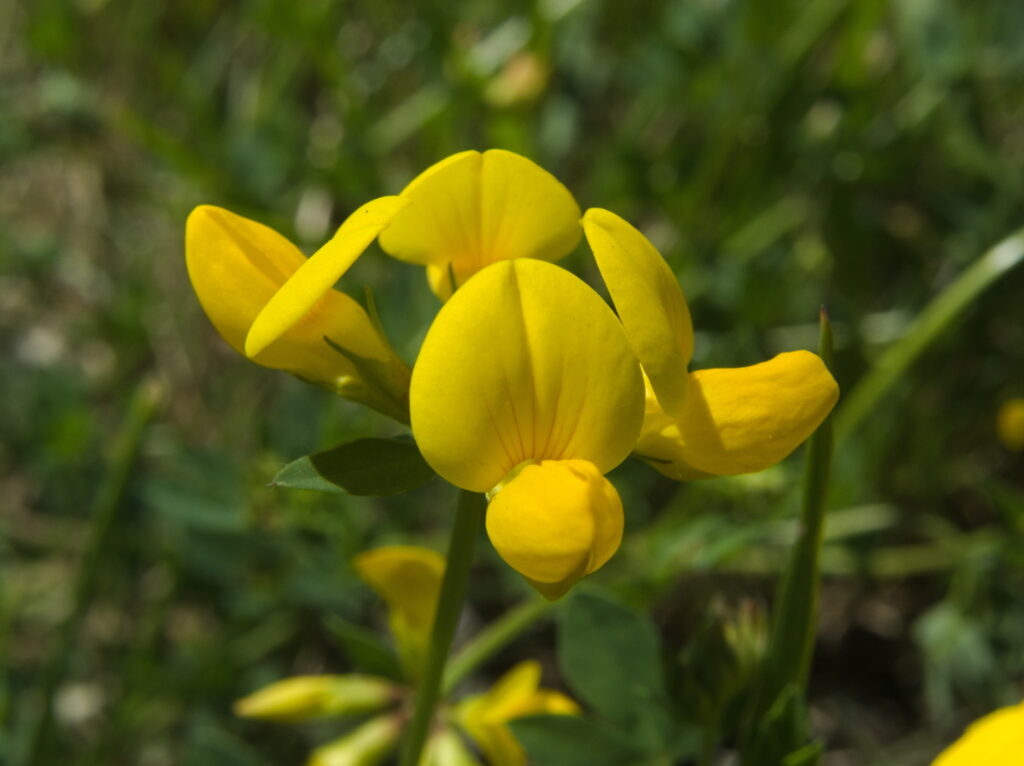
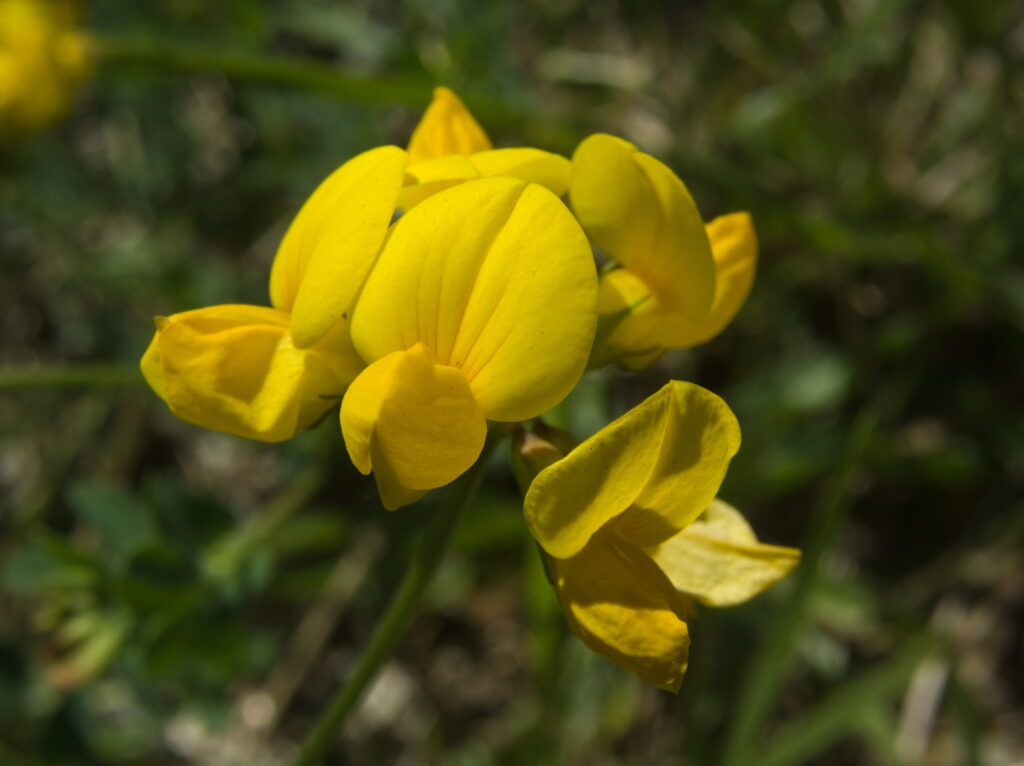
For a description of the species, see the Lotus corniculatus reference page.



